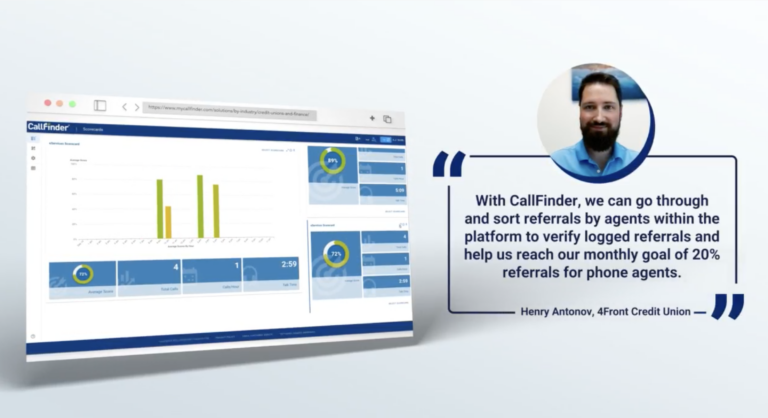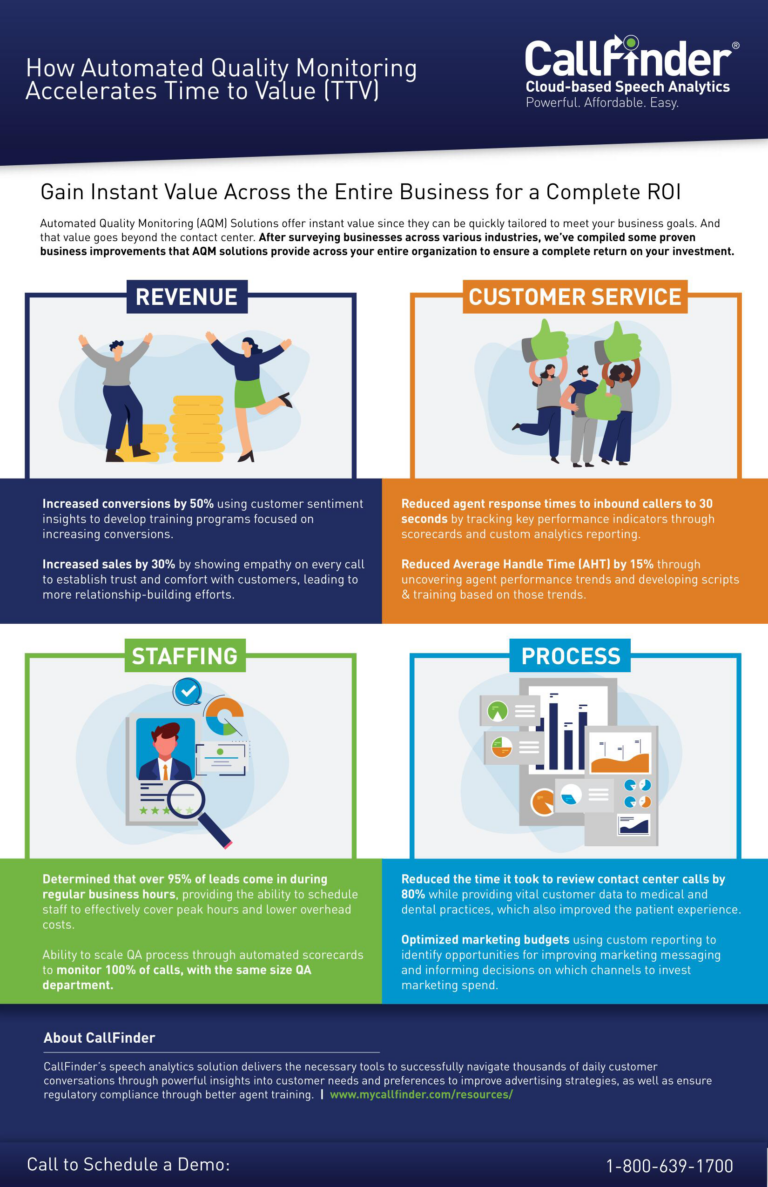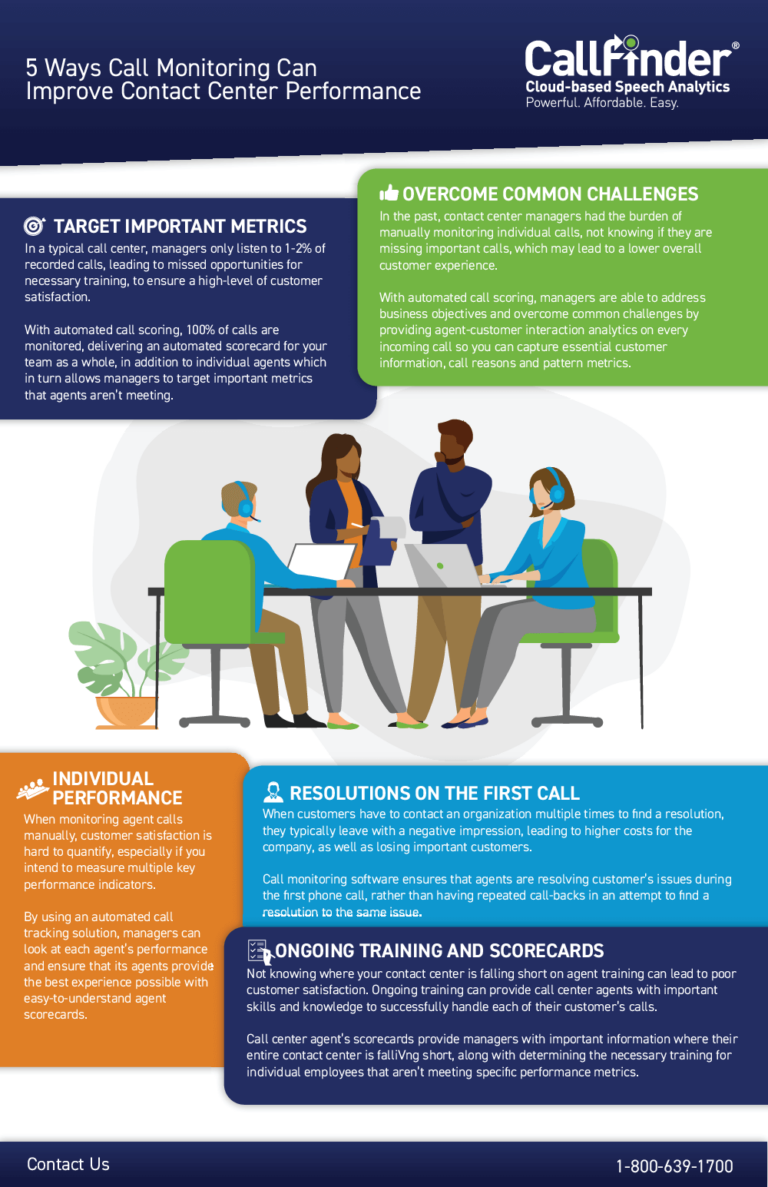
Does your call center operate like this? Managers monitor agents by walking around the center and listening in on live conversations for elevations in voice and tone. The manager then stops to help the agent with the customer. Once a week or maybe once a month, managers listen to a handful of call recordings to pick out conversations that need attention? Or worse, wait until a customer cancels an account to coach agents on their customer service skills?
If you answered yes to some or all of those questions, it’s time to stop monitoring your agents this way. With the right call center tools, your customers will get a better experience by improving your agents’ CS skills. You will also improve call center efficiency and lower costs. Start the new year off right with these call center tools from CallFinder.
Boost Efficiency with Call Transcriptions
Automated call transcriptions enable QA managers to get a bird’s eye view of every agent-customer interaction. With CallFinder’s speech-to-text feature, every call is analyzed and segmented by negative, neutral, and positive outcomes. Managers can get an overview of agent performance all in one dashboard.
But perhaps the main benefit of automated call transcriptions is the ability to quickly locate specific calls that need further attention. This saves an unbelievable amount of time, allowing managers and coaches to focus on training.
Target Agent Training with Automated Scorecards
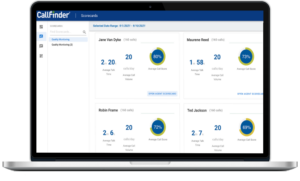
Our automated scorecards analyze recorded conversations according to the parameters that you set. You can use the scorecards to search for specific keywords that are either negative or positive and score your agents on anything, from script compliance to politeness. Scoping out certain words in customer phone calls is crucial to avoiding negative situations.
For instance, do you know how many times your agents say “I don’t know” in conversations with customers? It’s one of the worst phrases a call center agent can say. This might happen when a customer asks a question and the agent simply doesn’t know the answer or maybe doesn’t know the best answer. Automated scorecards search for phrases like “I don’t know” and score the agent on how many times it appears in the transcriptions.
Scanning calls for potentially negative words or phrases helps shape a better customer experience through a consistent, unbiased scoring method. But you can use scorecards to uncover positive outcomes too. Check out this video testimonial to learn how one company discovered that showing empathy increased their collection payments by $1.8M a year!
Analyze CX With Sentiment & Emotion
CallFinder’s sentiment analysis and emotion detection work together to help managers get a more nuanced understanding of how agents handle calls. Sentiment analysis measures the overall sentiment of a call based on certain metadata. Emotion detection provides the emotional temperature of a call using other signals, such as tone and volume.
Managers can quickly compare the number of negative and positive calls to determine if further training is needed. These metrics also provide an overview of how the entire agent team handles calls. Using sentiment and emotion KPIs, managers can more easily prioritize training needs.
Close Knowledge Gaps with Silence & Overtalk
Our solution also features silence and overtalk detection, which tells a lot about an agent’s soft skills, or lack thereof. For instance, if a particular agent takes too long to answer a question, then that agent’s calls will likely have a higher percentage of silence. This feature also helps identify and address sources of customer frustration. Calls with large amounts of overtalk may indicate that the agent doesn’t listen well. Silence and overtalk detection can help close major knowledge gaps through uncovering more targeted training needs, updating call scripts, or other factors affecting CX.
Improve FCR With Call Swing Metrics
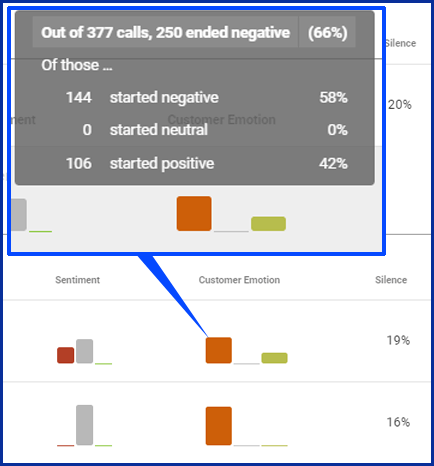
No customer wants to make a second or third call to resolve an issue or simply get an answer to a question. First Call Resolution (FCR) rates are used to improve the first call experience where your company has the best chance of making a strong impression.
CallFinder offers unique “call swing” metrics that clearly indicate how a call began, and how it ended. This helps managers determine whether to focus on FCR or other factors that impact call outcomes. For instance, if more calls started negatively than positively, then managers know there’s a problem at the start of the call. The biggest advantage of these metrics is that they quickly alert managers that there’s an issue.
Request a demo if you would like to know more about how to improve FCR rates and other important metrics with these call center tools. Or we have plenty of other ways you can get started with CallFinder.

